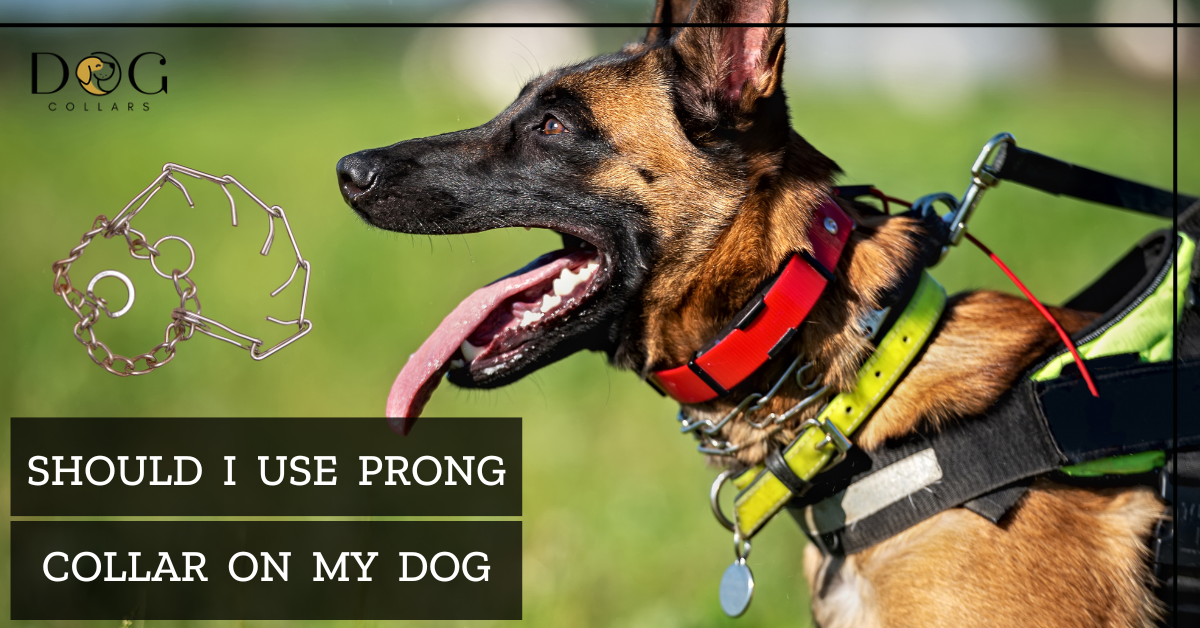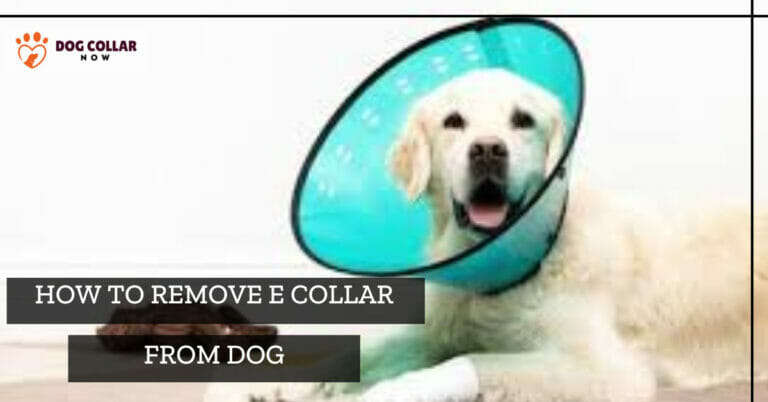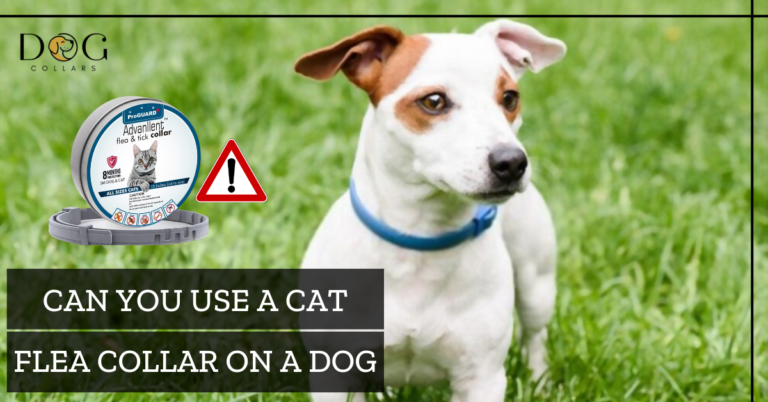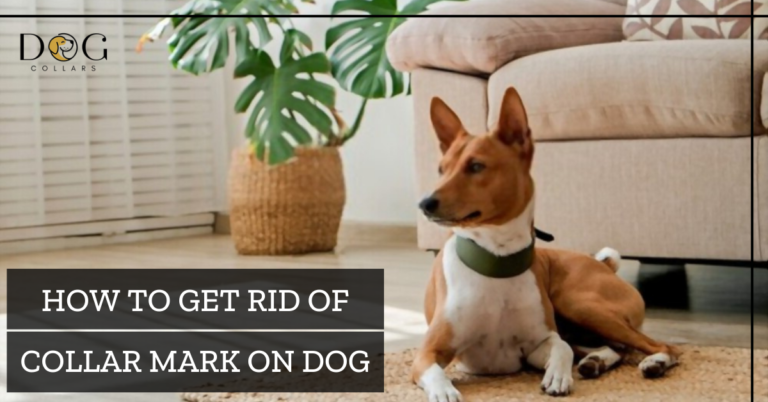Should I Use a Prong Collar on My Dog – To Use or Not to Use?

I know prong collars seem like a quick fix, but I’ve found that positive reinforcement training is a better approach for my furry friend.
As a dog owner, it’s important to prioritize your furry friend’s safety and well-being when it comes to training. It not only trains your dog but also strengthens your bond with them, leading to a more rewarding relationship in the long run. Ultimately, the decision is up to you, but I recommend considering the potential risks and benefits before utilizing a prong collar on your furry friend.
If you keep asking yourself, “Should I use a prong collar on my dog?” you’re not alone. Here, we’ll examine the pros and cons of using a prong collar so that you can make an informed decision about whether it’s the best training tool for your dog.
What are the factors to consider when using a prong collar on my dog?
As a known dog owner, I can provide some perspective on the factors to consider when deciding whether or not to use a prong collar on your dog.
- Size and strength of the dog: In terms of utilizing a prong collar, the size and strength of your dog are important factors to consider. If your dog is particularly large or strong and tends to pull on the leash, a prong collar may be helpful in providing better control. However, if your dog is smaller or has a more gentle personality. A prong collar may not be necessary and could even be uncomfortable or painful for your dog.
- Type of behavior you want to correct: Prong collars are often used to correct specific behaviors such as pulling, lunging, or jumping on the leash. If your dog has other behavioral issues, such as aggression or anxiety, a prong collar may not be the best choice, and other training methods may be more effective.
- Dog’s personality and temperament: It’s important to consider your dog’s individual personality and temperament before deciding to use a prong collar. Some dogs may be more sensitive or reactive to the pressure and discomfort caused by a prong collar and could become anxious or fearful as a result. If your dog is particularly sensitive, a prong collar may not be the best choice for them.
How Does a Prong Dog Collar Work?
A prong collar, also known as a pinch collar, is designed to provide more control over your dog on a leash. It works by using metal prongs or spikes that gently pinch the dog’s neck when they pull or lunge, creating an uncomfortable sensation that encourages them to stop the behavior.
The prongs are evenly spaced around the collar and are designed to distribute pressure evenly around the dog’s neck, reducing the risk of injury.
The idea behind a prong collar is to mimic the natural correction that a dog would receive from its mother or another dog in a pack when it exhibits unwanted behavior.
However, it’s important to note that a prong collar should always be used properly and under the guidance of a qualified and experienced trainer, as incorrect use can cause harm or discomfort to your dog.
Prong collars are often used for larger, stronger dogs that have a tendency to pull on the leash or exhibit other unwanted behaviors while walking. While they can be effective in providing better control over your dog. They should never be used as a substitute for proper training and socialization.
Pros and Cons of the Prong Collar
Pros:
- Prong collars can be a very effective tool for training dogs, especially those that are resistant to other forms of training.
- Prong collars can help redirect a dog’s attention and focus back to the trainer during sessions, which is beneficial if the dog is easily distracted or has a short attention span.
- Prong collars can be used as a last resort for dogs that are particularly stubborn or difficult to train.
- Prong collars are less likely to cause injuries to dogs than other types of training collars, such as choke chains.
- Prong collars are relatively inexpensive compared to other types of dog training equipment.
Cons:
- Some people believe that prong collars are inhumane and cruel, and argue that there are more humane ways to train dogs.
- Prong collars can be misused, and if used incorrectly, can cause a great deal of pain and suffering for dogs. For example, if a prong collar is left on a dog for too long, it can rub the skin raw and cause sores.
- Prong collars can also slip off of a dog’s neck if they are not fitted properly.
Overall, prong collar training can be effective for some dogs. It is important to consider the potential risks and limitations before deciding whether to use this type of collar for training.
If you do decide to use a prong collar, it’s important to work with a qualified and experienced trainer who can help you use the collar properly and safely.
How Should You Place a Prong Collar on a Dog Properly?
As a dog owner, I can provide some guidance on how to properly place a prong collar on your dog.
- Choose the right size:
It’s important to select a prong collar that fits your dog properly. Measure your dog’s neck and choose a collar with prongs that are long enough to fit snugly against the skin without digging in too deeply. Make sure the collar is not too loose or too tight.
- Position the collar correctly:
The prongs of the collar should be positioned so that they rest on the dog’s neck, not their throat. The collar should sit high on the dog’s neck, just behind its ears, and should be snug but not tight.
- Attach the leash:
Once the collar is properly positioned, attach the leash to the ring on the collar. It’s important to make sure the leash is attached to the collar correctly so that it doesn’t come loose during training.
- Monitor your dog:
Keep an eye on your dog while they’re wearing the prong collar to ensure that it’s not causing them any discomfort or pain. If your dog shows any signs of distress or discomfort, remove the collar immediately and consult with a qualified trainer.
It’s important to remember that prong collars should only be used for training purposes and should never be left on a dog for an extended period of time. Additionally, prong collars should always be used under the guidance of a qualified and experienced trainer.
When should I start using a prong collar?
As a responsible dog owner, you want to make sure you’re using the right tools to train and control your dog.
However, it’s important to use prong collars with caution and under the guidance of a professional trainer or behaviorist. You shouldn’t just start using one on your own without first consulting an expert.
Typically, prong collars are only recommended for dogs with severe behavioral issues, such as aggression or excessive pulling on the leash. They should never be used on puppies or small dogs, as they can cause physical harm.
If you’re considering using a prong collar, it’s important to make sure you’re using it correctly and not causing any unnecessary pain or injury to your dog. Working with a professional trainer can help you learn how to use the collar properly.
Remember, the safety and well-being of your dog should always be your top priority. So, take the time to do your research and get advice from a qualified professional before making any decisions about utilizing a prong collar.
Are prong collars legal?
The legality of prong collars varies depending on where you live, but in most places, these collars are still legal. However, it’s important to note that just because something is legal doesn’t necessarily mean it’s the best option.
These collars are designed for large dogs with strong neck muscles and should not be used on smaller, delicate dogs. When used correctly, prong collars can be an effective training tool for correcting a dog’s behavior.
However, improper use can cause harm to your pet, so it is essential to spend time learning how to use the collar correctly before using it on your dog. It is also important to remember that prong collars are not a long-term solution and should only be used as a temporary training aid.
If you decide to use a prong collar, it’s essential to follow instructions carefully and use it safely, under the guidance of a professional dog trainer. Alternatively, there are many other humane training tools available that can be just as effective without causing discomfort or harm to your furry friend.
Alternatives to Prong Collars
– Positive reinforcement: rewarding good behavior with treats and praise.
– Clicker training: Using a clicking sound to mark positive behavior followed by a treat.
– Martingale collar: A collar designed to gently tighten when pulled on, preventing dogs from slipping out.
– Harnesses: Designed to distribute pressure evenly across the chest rather than around the neck.
– Head collars: Similar in design to horse halters, they give owners more control over their dog’s head movements.
Conclusion
Prong collars are an effective training tool for dogs, but they should only be used with guidance from a professional. If you decide to use a prong collar on your dog. Make sure that you research the type of behavior it’s intended for and how to properly fit it. With proper fit and use, as well as positive reinforcement techniques, prong collars can be an important part of helping your pup become their best self.
FAQs:
Which Dogs Should Not Have a Prong Collar?
Puppies and small dogs should not have a prong collar, as it can cause physical harm. Additionally, dogs without severe behavioral issues should not be trained with a prong collar.
How to Use Prong Collars for Dog Training?
Prong collars should be used under the guidance of a professional trainer. Fit it properly, use quick and firm corrections, and monitor your dog’s behavior.
Do vets recommend prong collars?
Vets typically do not recommend prong collars. They can cause physical harm and should only be used under the guidance of a professional trainer or behaviorist.
Do prong collars stop dogs from pulling?
As a general rule, prong collars are great for stopping dogs from pulling and dragging the handler down the street on walks. The right way to give a leash correction is to POP the leash.
Will a dog pull with a prong collar?
As a general rule, prong or choke collars are great for stopping dogs from pulling and dragging the handler down the street on walks.
How to Find the Perfect Dog Trainer?
To find the ideal dog trainer, research local professionals, check credentials and reviews, get recommendations, observe a session, and ensure they use positive reinforcement and communicate effectively.
Are prong collars safe for dogs?
Prong collars can be safe for dogs when used correctly under professional guidance. However, they may cause injury or discomfort if misused or fitted improperly.






